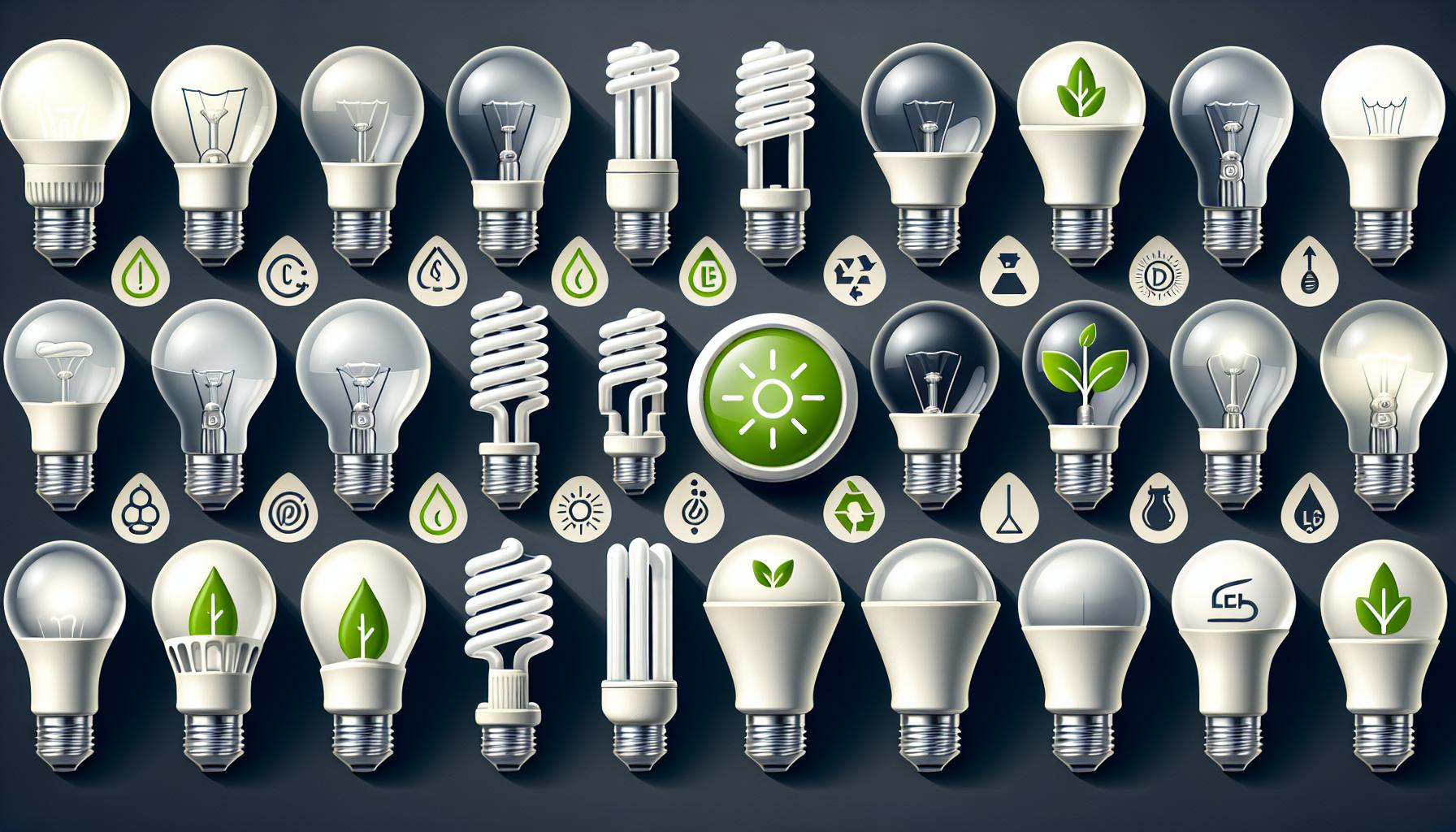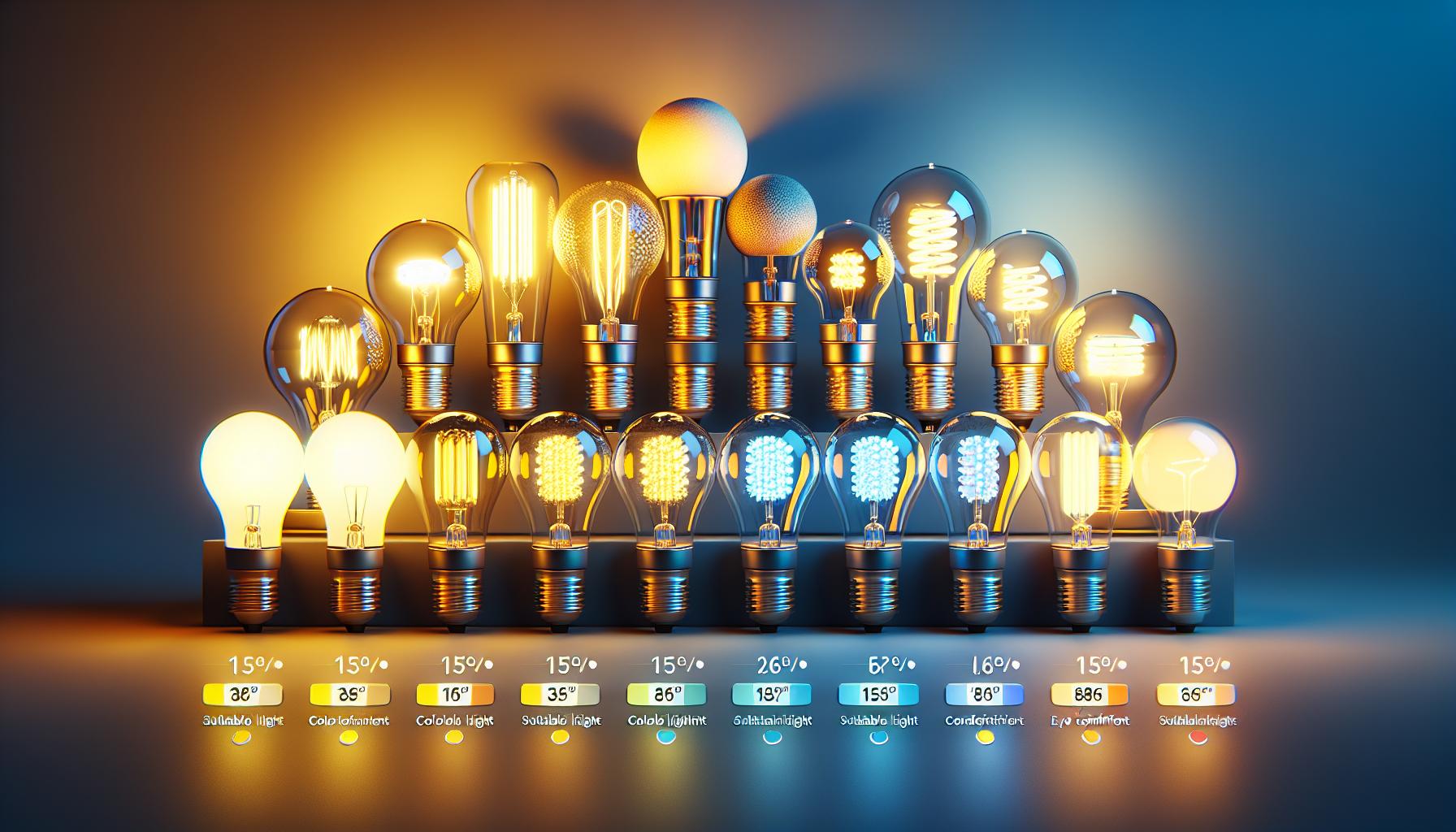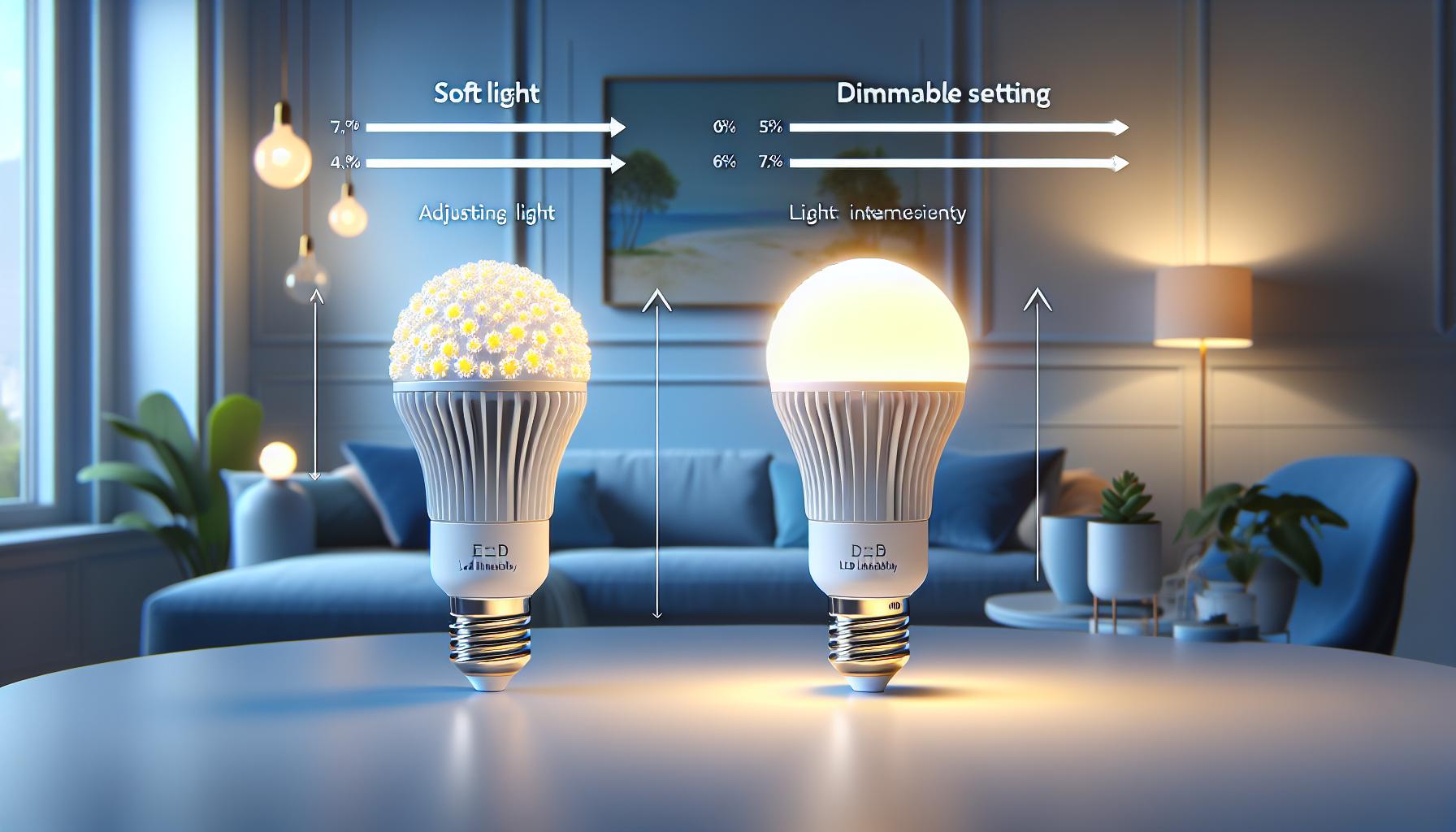Ever squinted under the harsh glow of a fluorescent bulb or felt the strain in your eyes after a long day bathed in artificial light? You’re not alone. Finding light bulbs that are easy on the eyes is key to not just your comfort but also your overall eye health.
In your quest for the perfect ambience, it’s crucial to understand which bulbs won’t leave you rubbing your temples. Let’s shed some light on the options that’ll brighten your space without the glare, ensuring you can read, work, and play without the pesky flicker or eye fatigue.
The Importance of Eye-Friendly Light Bulbs
Being aware of the influence light has on your eyes is crucial. Eye-friendly light bulbs are not just a preference—they’re a necessity. Prolonged exposure to harsh lighting can lead to eye strain, headaches, and even long-term vision issues. As a lighting enthusiast who’s tackled numerous DIY projects, you understand that the right ambiance is not just about aesthetics; it’s about comfort and health too.
Lighting quality affects your daily life, from productivity to mood. When you choose bulbs that mimic natural light, you’re essentially replicating the ideal scenario for human eyes. Think about the warmth of a morning sun or the soft evening glow—these conditions are where your eyes function best. Eye-friendly bulbs aim to provide a similar experience.
When searching for bulbs, consider these key aspects:
- Color Temperature: Bulbs with a color temperature ranging from 2700K to 3000K emit a warm, soft light similar to a sunrise or sunset.
- CRI (Color Rendering Index): High CRI bulbs (>80) ensure that colors appear natural and vibrant, reducing the strain on your eyes.
- Non-Flickering: Steady illumination without flickering helps prevent fatigue, as your eyes aren’t constantly readjusting to variable light levels.
- Dimmable Options: Being able to adjust the brightness means you can customize the intensity of light based on what’s comfortable for you.
Here’s a simple breakdown of color temperatures and their ideal settings:
| Color Temperature (K) | Description | Ideal for |
|---|---|---|
| 2700 – 3000 | Warm White | Living rooms, Bedrooms |
| 3000 – 3500 | Soft White | Dining Areas, Kitchens |
| 3500 – 4000 | Cool White | Workspaces, Garages |
| 4000 – 6500 | Daylight | Reading, Task Lighting |
Remember, the best light bulb for your eyes is the one that provides sufficient brightness without glare. It’s about creating a harmonious space where you can read, work, or relax without sacrificing your eye comfort. As you continue exploring lighting options, keep these guidelines in mind to ensure you’re not compromising on the health and wellbeing of your eyes amidst your quest for the perfect lighting.
Understanding Different Types of Light Bulbs
When you’re on the hunt for bulbs that are easy on the eyes, it’s crucial to know about the different types available on the market. Incandescent bulbs used to be the household standard, offering a warm glow that’s gentle on the eyes but not the most energy-efficient choice. Nowadays, compact fluorescent lamps (CFLs) are common, using less energy than incandescents. They’ve been under scrutiny, however, for the blue light they emit, which can be harsh on your vision and impact your sleep cycle.
Light-emitting diodes (LEDs) have surged in popularity. They’re the energy-saving champs, shining bright while sipping electricity at a leisurely pace. Plus, they last longer—some say it feels like forever—so you’ll climb ladders for replacements less often. LEDs have evolved dramatically, giving you options like warm white that mimics the sun’s natural rays, key for avoiding that dreaded eye strain. Just make sure you check for a high color rendering index (CRI) and that they’re non-flickering to really pamper your peepers.
Then there’s the newcomer: halogen bulbs. Think of them as incandescent’s more efficient cousin, providing a spectrum of light that won’t send your eyes into overload.
To visualize the energy efficiency of these bulb types, consider the following table:
| Bulb Type | Energy Usage (Watts) | Approximate Lifespan (Hours) |
|---|---|---|
| Incandescent | 60 | 1,000 |
| CFL | 14 | 8,000 |
| LED | 10 | 25,000 |
| Halogen | 42 | 2,000 |
While you might be raring to pick up some LEDs, remember that not all LEDs are created equal. It’s all about finding that sweet spot—bulbs that remind you of the great outdoors without that faint buzzing sound or the dance of a flicker. And if you’ve got a dimmer switch at home, make sure your bulb choices are compatible. A cozy night in shouldn’t end with you squinting at your book or blinking away fatigue because the light’s too harsh or too dim.
Choosing the Right Color Temperature
« Why Is My Light Bulb Not Turning On? Fix It With These Simple Steps
What Is Light Bulb Parking? Master the Art of Snagging the Perfect Spot »
When it comes to picking a light bulb that’s easy on your eyes, color temperature is a key factor. It’s measured in Kelvins (K), and it influences the feel of the light emitted by a bulb. Lower Kelvin numbers mean the light appears more yellow and warm, similar to a sunset, whereas higher Kelvin numbers result in a bluer, cooler light akin to daylight.
To create a cozy and inviting atmosphere, look for bulbs in the 2700K to 3000K range. These warm white bulbs are perfect for living spaces and bedrooms where you want to relax. They’re gentle on your eyes and won’t interfere with your melatonin production as much as cooler temperatures.
On the flip side, cooler temperatures, starting around 3500K, enhance concentration and are ideal for task lighting. In areas where you’re working, like the home office or kitchen, a crisp, clear light is necessary. However, these cooler lights can be harsh if you’re sensitive to bright light, so balancing them with layers of warmer accent lighting is a trick DIYers love. It alleviates strain on your eyes without sacrificing functionality.
While selecting the right color temperature, consider the room’s purpose and how you want to feel in that space. Here’s a quick reference:
| Room | Recommended Color Temperature (K) |
|---|---|
| Bedrooms | 2700K – 3000K |
| Living Rooms | 2700K – 3000K |
| Home Offices | 3500K – 5000K |
| Bathrooms | 3000K – 3500K |
| Kitchens | 3500K – 5000K |
Remember, the right color temperature doesn’t just illuminate; it transforms. It can turn your bathroom into a soothing spa retreat or your office into a productivity powerhouse. Intelligent choices here can make all the difference in designing a space that looks great and feels just right. Keep in mind that it’s not just about aesthetics—it’s your wellbeing that’s illuminated along with your home.
Dimmable Bulbs for Customizable Lighting
Discovering the ideal brightness for any room isn’t just about selecting the right wattage anymore. With dimmable bulbs, you have the power to tailor the intensity of light to suit your needs and mood. You can create a dynamic home environment that’s both eye-friendly and versatile – think of dimming down your lights for a movie-night ambiance or brightening up the workspace when it’s crunch time.
Dimmable LED bulbs are a game-changer for eye comfort. These bulbs allow incremental adjustments in brightness, making it easier on your eyes as they adapt to different light levels. When you’re involved in tasks that require focus and precision, like reading or crafting, simply dial up the brightness. Conversely, when you want to unwind and relax, a softer, dimmed light is just a switch away.
It’s essential to note that to reap the benefits of dimmable bulbs, you’ll need compatible dimmer switches. Traditional incandescent dimmers might not always work well with LED technology, as they may cause flickering or reduce the lifespan of your LED bulb. So, ensure you have the right setup to enjoy seamless, flicker-free dimming.
- Double-check dimmer and bulb compatibility.
- Upgrade to LED-specific dimmer switches if necessary.
- Consider smart dimmer switches for greater control via smartphones or voice assistants.
Special Features to Look For
When diving into the world of lighting, you’ll uncover a treasure trove of features that can make a light bulb much kinder to your eyes. There’s more to this quest than just picking the right color temperature; specific features can genuinely enhance your visual comfort.
First up are bulbs with adjustable color temperatures. Imagine a bulb that shifts from energizing daylight tones in the morning to calming warm light by evening. This adaptability syncs with your circadian rhythm and reduces eye strain throughout the day. Look for bulbs that offer a spectrum of color temperatures you can control with a smartphone or remote.
Next, consider blue light reduction. Blue light, known for its presence in digital screens, can be taxing on your eyes, particularly at night. Bulbs that are engineered to emit less blue light can be a godsend for your nightly reading or those times you’re winding down before bed.
There’s also a conversation to be had about flicker rates. That subtle flicker some bulbs have can be a nightmare for sensitive eyes, leading to discomfort and even headaches. Opt for bulbs that boast a low flicker rate to keep your spaces soothing and your eyes at ease.
Luminous efficacy is another term worth getting familiar with. It reflects the amount of light a bulb emits for each watt of power consumed. Higher efficacy means you’re getting more brightness for less power, which often translates to a more consistent and comfortable light output.
Lastly, let’s not forget glare control. Bulbs with a built-in mechanism to reduce glare can prevent those harsh reflections on surfaces that often contribute to eye strain. Some bulbs come with a matte finish or diffused lens that softens the light, making it easier for your eyes to handle for extended periods.
As you gear up for your next lighting project, keeping an eye out for these special features is key to achieving not just an aesthetically pleasing space, but also one that prioritizes your visual well-being. Whether it’s for work or relaxation, you deserve lighting that does more than just illuminate—it should comfort and enhance your surroundings.
Conclusion
You’ve got all the insights you need to make a smart choice for your eyes. Remember, the right light bulb can transform your space and your comfort. Whether you’re curling up with a good book or powering through a workday, consider bulbs that adjust to your needs, minimize blue light, and keep flicker to a minimum. Don’t forget, high luminous efficacy and glare control are your friends. Here’s to lighting up your world in the gentlest way possible!
Frequently Asked Questions
What features should I consider when choosing light bulbs?
Choose light bulbs with adjustable color temperatures, low blue light emission, low flicker rates, high luminous efficacy, and glare control features to enhance visual comfort and reduce eye strain.
How does adjustable color temperature benefit my eyes?
Adjustable color temperature allows you to shift from energizing daylight tones to warm, calming light depending on the time of day, which can help reduce eye strain.
Why is blue light reduction important in bulbs?
Reducing blue light, especially at night, can benefit your sleep patterns and provide a more restful ambient environment, easing the transition to sleep.
What is the advantage of low flicker rate bulbs?
Low flicker rate bulbs can help prevent discomfort and headaches, particularly in individuals with sensitive eyes or who are prone to visual fatigue.
Why is high luminous efficacy important in light bulbs?
High luminous efficacy means that the bulb provides more brightness while consuming less power, making it both cost-effective and energy-efficient.
How do bulbs with glare control protect my eyes?
Glare control, through matte finishes or diffused lenses, minimizes harsh reflections and direct glare, thereby reducing potential eye strain and improving comfort.





